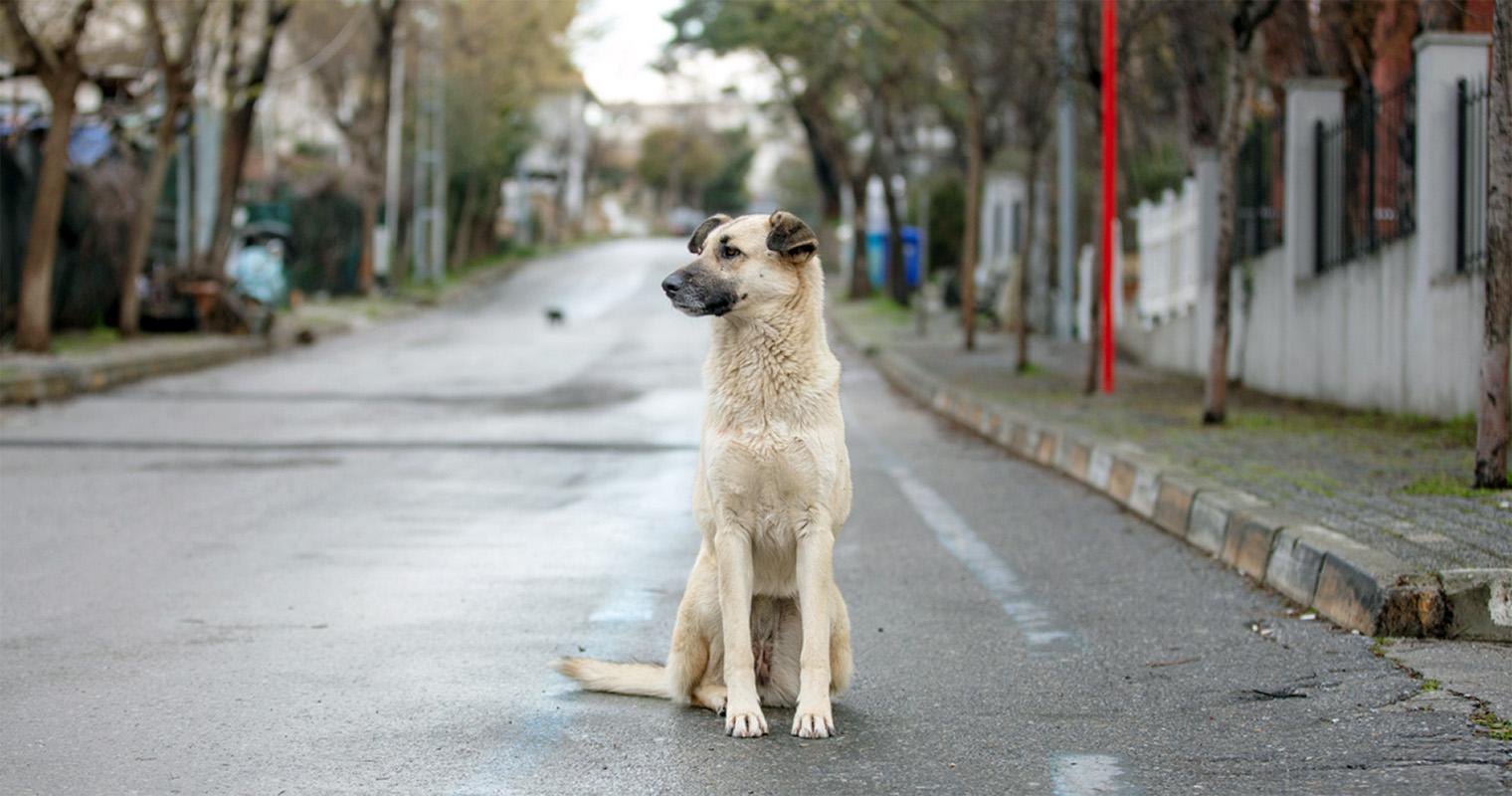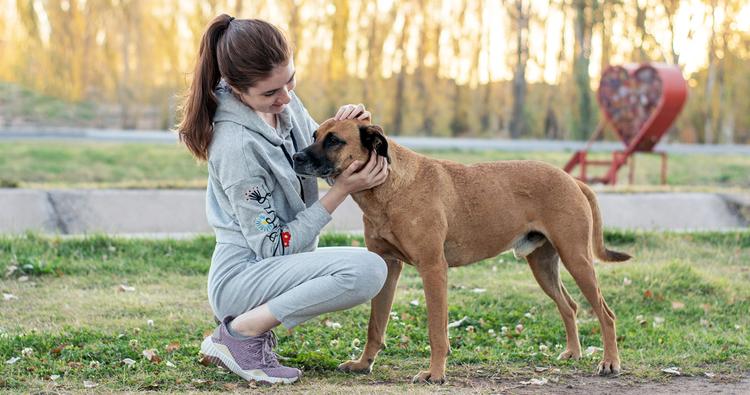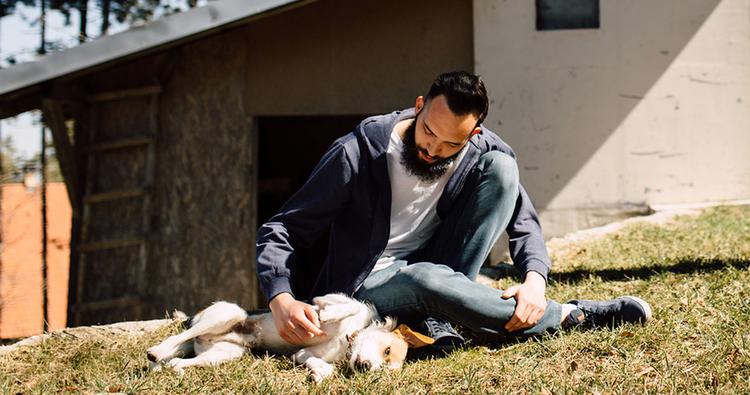What To Do With a Stray Dog: The Big Dos and Don’ts
If you find a stray dog, here’s a guide with your next steps.
If you find a stray dog, here’s a guide with your next steps.
by Alicia Kort, | February 23, 2024

Berk Ucak / iStock
If you see a dog wandering around a neighborhood, the first thing you’ll probably want to do is help. When you find a stray dog, you can imagine the worst of what could happen if you can’t get them to come to you, so it feels urgent to get this dog under your temporary care as soon as possible. But first, you need to know what to do.
But when you’re standing in front of a stray dog or pulling your car over on the side of a highway, you need to have certain steps at the ready and a plan of action, which is what we’re here to help with. You know very little about the stray dog that you’re approaching, so this guide is important to follow. You’ll not only learn how to interact with the stray, but you’ll also know when it’s time for you to call in back-up (aka the trained professionals).
So, you’ve found a pup who doesn’t seem to have a pet parent nearby. Now, what to do with that stray dog you found? First, you need to identify if they’re too scared to be approached or are friendly.
If the dog is just a little nervous but seems interested in you, we recommend that you approach them slowly but calmly. Open your car door to try to convince them to come to you and get in. Make sure that you aren’t leading them toward a busy road or other danger; you’ll want them to get away from anything that might hurt them.
Otherwise, they might panic and try to run into the danger and away from you. Also, don’t chase them. They will outrun you, and it’ll ultimately just make them less trustworthy of you. Call them in a friendly voice, have a slip lead at the ready to slip over their necks if you get a chance, and a handful of treats to try to bribe them into your vehicle. There’s even a stray dog kit that you can assemble and always have at the ready in case you come across one — you can read more on that here.
There’s a difference between a dog who is a little nervous and one who is terrified. Many stray dogs have had bad interactions with humans, so they are rightfully scared. If the stray dog is growling, showing their teeth, barking menacingly, or threatening to bite, you should not approach them. What you should do is call your local rescue to see if they are able to come and help you. If they aren’t available, we recommend calling animal control and giving them information on the size, breed, and what the dog looks like. You should also mention that you’re willing to rehome the dog yourself, if you’re worried that animal control will take them to a kill shelter.
Now that you have a stray pup in your vehicle, you are likely wondering where to take them. It might be tempting to bring them to your home and stash them there while you figure out what to do, but what you should do is call a local veterinarian and see if you can get the dog in immediately. You need to see if the dog is microchipped — they might have gotten away from their pet parents and the vet will be able to give you their contact information — and they could be injured, suffering from an illness, starving, or dehydrated. The sooner you’re able to get them to a vet, the better.
After your vet visit, if the dog has no microchip, your next step is to call your local rescue and animal control. You might be wary of calling animal control, but if you double-down on telling them that you’d be willing to rehome or even adopt the stray dog, they can usually make that possible. Here’s why this step is so important:
Animal control is the first place people look or go to when they are looking for a lost pet.
Laws about what you should do if you take in a stray vary by city and state. Call your local animal control to find out what the laws in your area are so you can follow them.
If you do want to keep the pet, be sure to make that well known to animal control so that your name is at the top of the waiting list of potential adopters if this is an option the shelter offers. A typical holding period is three to four days, but this varies by location. Learn the exact date the dog's hold will be up, and arrive at the shelter when it opens that morning.
If you want to rehome the pet yourself, this is also an option. Sometimes, animal control will allow you to keep the dog in your house during the holding period. Once that holding period is over and no pet parent has come forward, you can begin the rehoming process. One tool that is especially helpful is Rehome by Adopt a Pet You can create a profile for the stray dog for millions of potential adopters to see.
Like we mentioned above, sometimes animal control will allow you to house the dog for 3-4 days. There, this stray will essentially become your foster dog until they are either claimed by their pet parents or they are taken in by a rescue or shelter. Animal control might give you a few of the necessary pet supplies you’ll need (a crate, water bowls, food bowls, leash, collar, or food), but there is a chance that you might have to pay for it yourself. Make sure to keep the stray away from any pets, as they might be sick or not caught up on necessary vaccinations. If the dog isn’t feral and seems like they had a previous pet parent, they might adapt to your home more quickly, but if they are feral, you might want to give them their own room or safe space, in addition to a crate, for them to adjust to their new surroundings.
The priority after catching and housing a stray dog is to find their pet parents. You might immediately be tempted to keep the dog for yourself, but frantic pet parents might be looking for them. Contact animal control, your local shelter, and your local rescue, and also post on local social media groups and community websites that you’ve found a stray.
Once the pet parents have contacted you about the dog, you should ask for proof that this is their dog, (meaning: vet records, registration, or adoption papers) and recent photos of the dog with their family. Make sure to look at timestamps of the photo. In addition to all of this, see how the dog reacts when they see their pet parents. If they’re enthusiastic, then you can feel confident that you’ve reunited them.
If the holding period is up, you need to consider what you should do. Maybe you’ve bonded with the dog and want to adopt them. You will need to reconcile yourself with the fact that the pet parents might return and want their pet back, because that is a possibility. If you want to adopt the dog, contact either animal control or your local shelter and go through their formal process.
If you don’t want to adopt the dog, you should do research on which organization you would like to turn the pet over to. You should aim for a local rescue, because they are no-kill organizations that will try to find the dog the best possible home. If you don’t have any rescues near you, you can look into local shelters, but prioritize the no-kill shelters.
It’s important to note that pet stores, like Petsmart and Petco, don’t take in strays. Once you’ve found the right place, give them a call and say that you’d like to rehome a stray that you’ve found and see if they have room. You can also Rehome pets on Adopt a Pet. Rehome is a safer and reliable way to find a loving home for a pet. This peer-to-peer adoption service allows pet parents to post pets needing new homes on Adopt a Pet so they can be seen by millions of potential adopters. With Rehome, there are tools and guidance provided to help screen applicants and choose the right family for a pet.
If you’ve managed to catch the stray dog, see if there are any local veterinarians or animal hospitals that you could bring the dog to. If there aren’t any, you could house the dog yourself overnight, but we recommend calling animal control immediately to say that you’ve found a stray.
And if you haven’t caught the dog, contact animal control and give them as much information as possible about what the dog looks like and where you spotted them running around and they will try to locate them.
Call animal control immediately to say that you’ve found a sick, stray dog. If you can get them to an animal hospital do so, but if you aren’t comfortable, wait until animal control can arrive to handle the situation.
No, do not let a stray dog go. If you don’t feel confident trying to catch or care for the dog yourself, call animal control and your local rescue.
You should call animal control and provide the mother and puppies with food and water until they can be picked up. If after a visit to the vet, animal control might allow you to temporarily care for the dog and puppies, if that’s something that you want.

Alicia Kort is a writer and editor living in Brooklyn. She’s currently the senior commerce editor at Apartment Therapy. She’s been published in StyleCaster, Electric Literature, Newsweek, Interview, Brooklyn magazine and more. In her free time, she runs, reads, and spends time with her dog-nieces, Maya and Lady, and her cat-niece, Pepper.

Rehome

Rehome

Adoption Advice



Shelters & Rescue
Have you ever come across a lost pet and wondered what to do? Read more to learn the best steps to take.

Shelters & Rescue
Found a stray dog in your neighborhood? Read more to learn how to help safely.

Behavior & Training

Behavior & Training
Behavior & Training
Behavior & Training

Behavior & Training